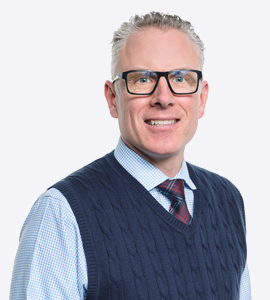Leadership is intentional influence.
— Tim Tassopoulos, COO, Chik-fil-A
In many ways, the emergency department (ED) is the organizational heart of the hospital.
In the course of each shift, emergency physicians work closely with hospitalists, specialists, nurses, the lab, imaging staff, patient transport and housekeeping. They learn to navigate other departments and cultures, getting a bird's eye view of hospital politics and the players involved.
These interactions are crucial, because ED performance has repercussions across the organization. A patient's ED experience has a huge impact on their overall safety and satisfaction. ED patient flow impacts all other areas of the hospital — and vice versa. And according to a recent RAND report, emergency physicians facilitate half of all admissions, which play a major role in hospital revenue.
For ED physician leaders, dealing with all these colliding forces can be a challenge. But it also offers an incredible opportunity for change.
Emergency physicians have huge potential spheres of influence. And they can use that influence to drive positive change even when they don't have direct managerial authority over those involved.
Influence is a slippery concept that's gaining traction in the management world. Rather than playing the boss card or cajoling others into tasks, good influencers use the power of relationships to change behavior. It's about the ability to align people in pursuit of a common goal and inspire action.
As a former medical director, I know firsthand that it's impossible for an ED to improve in isolation. We can't boost patient satisfaction without the help of the nurses who deliver the bulk of minute-by-minute care. And we certainly can't drive down turnaround times unless we work in tandem with the imaging staff, the folks in the lab and our hospitalist colleagues.
So how can ED physician leaders become more influential? Here are a few tips I've shared as part of Vituity's medical director academy:
Improve your emotional IQ. As a leader, you can't be loved all of the time. But nagging or throwing your weight around won't work either. Research shows that leaders who are rated low in likability by those around them have a 1 in 2,000 chance of being rated effective.
Let your reputation precede you. Good influencers command respect without even trying. Kindness, compassion and quality are the mandatory minimum for any physician leader. Start there and go above and beyond.
Build relationships. Before you try to lead, get to know that people upon whom your success depends. Look for personal connections. And even when you're really busy, do your best to project warmth and understanding.
Lead by consensus. When leading large-scale change, you won't necessarily have direct managerial control over all the players. Plan to spend a lot of time gaining buy in. Help folks understand how getting on board with change will make their jobs easier, safer and more satisfying and secure.
Work at culture change. Certain environments lend themselves to collaboration and teamwork. As you're leading change, think about ways to increase engagement and raise staff expectations of one another.
Strike while the iron is hot. Thanks to healthcare reform, many hospital administrators are truly seeking to align with emergency physicians to improve quality metrics and patient flow. Partnering with the executive team can increase your credibility, which in turn strengthens the influence you wield.
Focus, focus, focus. Changing ingrained behavior requires a marathon, not a sprint. Obstacles will crop up. Politics will undermine your efforts. Don't give up. Instead, keep laser-focused on your goals — enhanced patient care and operational performance — and keep others focused there too.






















